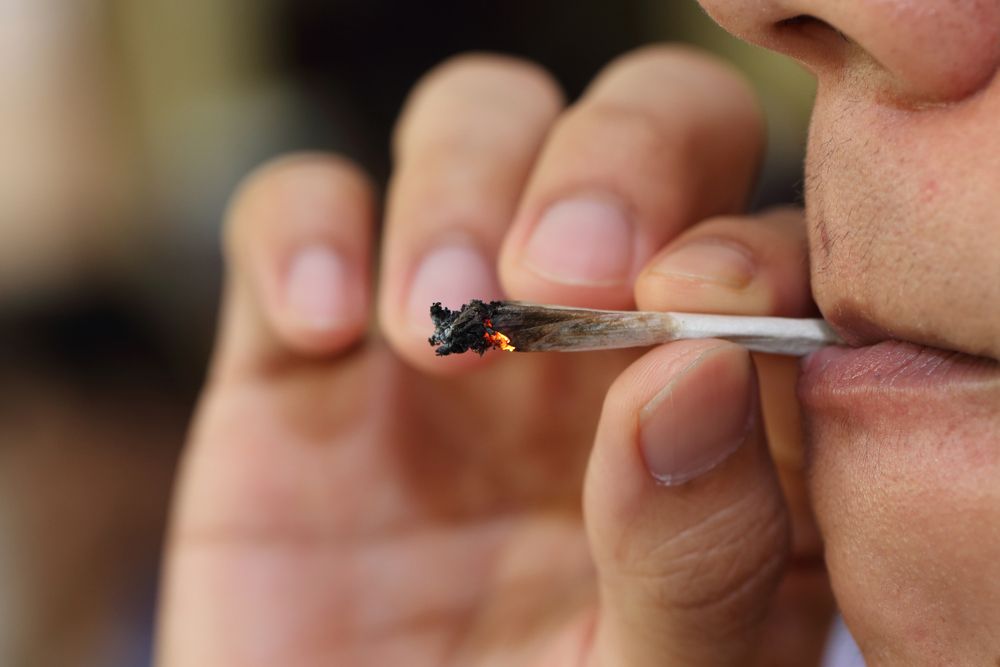Article
Marijuana Screening Recommended for Cardiovascular Disease
Author(s):
Screening, testing and counseling for marijuana use is needed, especially in young patients presenting with cardiovascular disease, according to a review recently published in the Journal of the American College of Cardiology.
(©Charnsitr,Shutterstock.com)

Screening, testing and counseling for marijuana use is needed, especially in young patients presenting with cardiovascular disease, according to a review recently published in the Journal of the American College of Cardiology.
As more states are legalizing cannabis for both medicinal and recreational purposes, marijuana use is increasing, and is more prevalent in younger adults. The U.S. Food and Drug Administration has approved three cannabinoids for medical use: cannabidiol, an oral solution for the treatment of seizures in rare forms of epilepsy; dronabinol (synthetic delta-9-tetrahydrocannabinol [THC]) to treat refractory chemotherapy-associated nausea/ vomiting and HIV-related anorexia/weight loss; and nabilone (synthetic chemical structure similar to THC) for refractory chemotherapy-associated nausea/vomiting.
Data from the National Health and Nutrition Examination Survey estimate that more than two million people with cardiovascular diseases currently use or have used marijuana in its variety of forms, including inhalation and vaping. Smoking marijuana carries many of the same cardiovascular health hazards as smoking tobacco. Observational studies have suggested an association between THC and a range of cardiovascular risks, but few randomized trials have been conducted to assess the effects of marijuana on cardiovascular risk. Recommendations are lacking to guide the cardiovascular community.
“This review summarizes cardiovascular considerations related to marijuana use, pharmacological interactions, and future steps to provide clearer guidance regarding its cardiovascular safety,” wrote the authors, led by Muthiah Vaduganathan, M.D., M.P.H., of Harvard Medical School in Boston.
Marijuana use may pose potential cardiovascular risk in patients with atherosclerotic cardiovascular disease, especially early after acute coronary syndromes. Smoking cannabis can lead to increases in heart rate and blood pressure, secondary to sympathetic nervous system activation, augmenting myocardial oxygen demands. While long-term use promotes tolerance and may be associated with less pronounced physiological effects, epidemiological studies have found a potential temporal link between marijuana use and myocardial infarction.
Meanwhile, a broad range of cardiac electrical effects, including atrial fibrillation and ventricular tachycardia, have been described with marijuana use, which may be explained by the increased catecholamines and b-adrenergic stimulation with THC that could raise arrhythmogenicity. Cerebrovascular events have also been reported in association with marijuana use, due to the direct vasculotoxic effects, alterations in hemodynamics, or incident atrial fibrillation/flutter.
Further, thrombosis and ischemia have been reported in the peripheral arteries with marijuana use, and delta-8 and delta-9-tetrahydrocannabinols have been shown to stimulate peripheral vasoconstriction. Cannabis use has also been associated with myocardial dysfunction, independent of coronary artery disease. Case reports have suggested associations of cannabis with stress cardiomyopathy and myocarditis/ myopericarditis, an entity refhttp://www.onlinejacc.org/content/75/3/320erred to as toxic myocarditis. Additionally, heart transplant candidacy may be affected by marijuana use. Potential concerns include medication adherence due to the psychotropic effects of THC, infectious complications in the setting of immunosuppression, and interactions with tacrolimus.
In regard to pharmacological interactions, cannabinoids affect key classes of cardiovascular medications including antiarrhythmics, calcium-channel blockers, statins, beta-blockers, and warfarin, by inhibiting the cytochrome P (CYP) 450 family. However, limited clinical data are available to guide dose or therapeutic changes.
“In light of accumulating data suggesting prevalent use of marijuana, including among patients with established cardiovascular disease, it is important to integrate screening, counseling, and testing when appropriate into clinical care,” the authors wrote.
Questions to patients should include frequency, quantity, and methods of administration, and patients should be made aware potential cardiovascular hazards of marijuana use, especially when used via smoking/inhalation routes. Since marijuana is also being delivered in vaporized forms, especially among young adults, clinicians should counsel patients about the variable concentrations of psychoactive THC delivered via different methods of use, as vaporized cannabis may yield high concentrations with greater pharmacodynamic effects than smoked cannabis.
Additionally, it may be reasonable to perform urine toxicology in the setting of myocardial infarction and new-onset heart failure. Marijuana testing is also required before an evaluation for heart transplantation. Patients should be screened for and counseled regarding the hazards of concurrent use of other illicit drugs, especially those with known adverse cardiovascular effects, such as cocaine and methamphetamines. Meanwhile, multidisciplinary assessment with a pharmacist will help determine whether dose changes are required for therapies with known interactions.
“Shared decision making is encouraged if marijuana is used for symptom management or palliative purposes, incorporating estimates of life expectancy and cardiovascular risks,” the authors wrote.
“Cardiovascular specialists should be aware of local regulations and state-specific legalization status of marijuana products,” the authors wrote.
REFERENCE
Ersilia M. DeFilippis, Navkaranbir S. Bajaj, Amitoj Singh, et al. “Marijuana Use in Patients With Cardiovascular Disease.”JACC. January 3, 2020. DOI: 10.1016/j.jacc.2019.11.025





